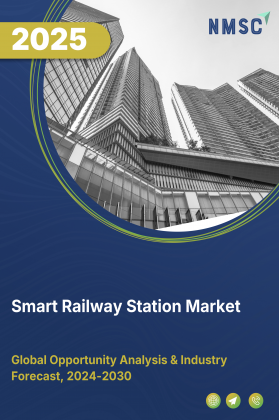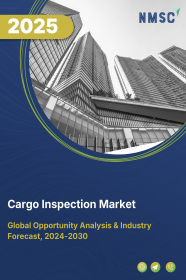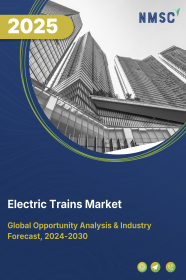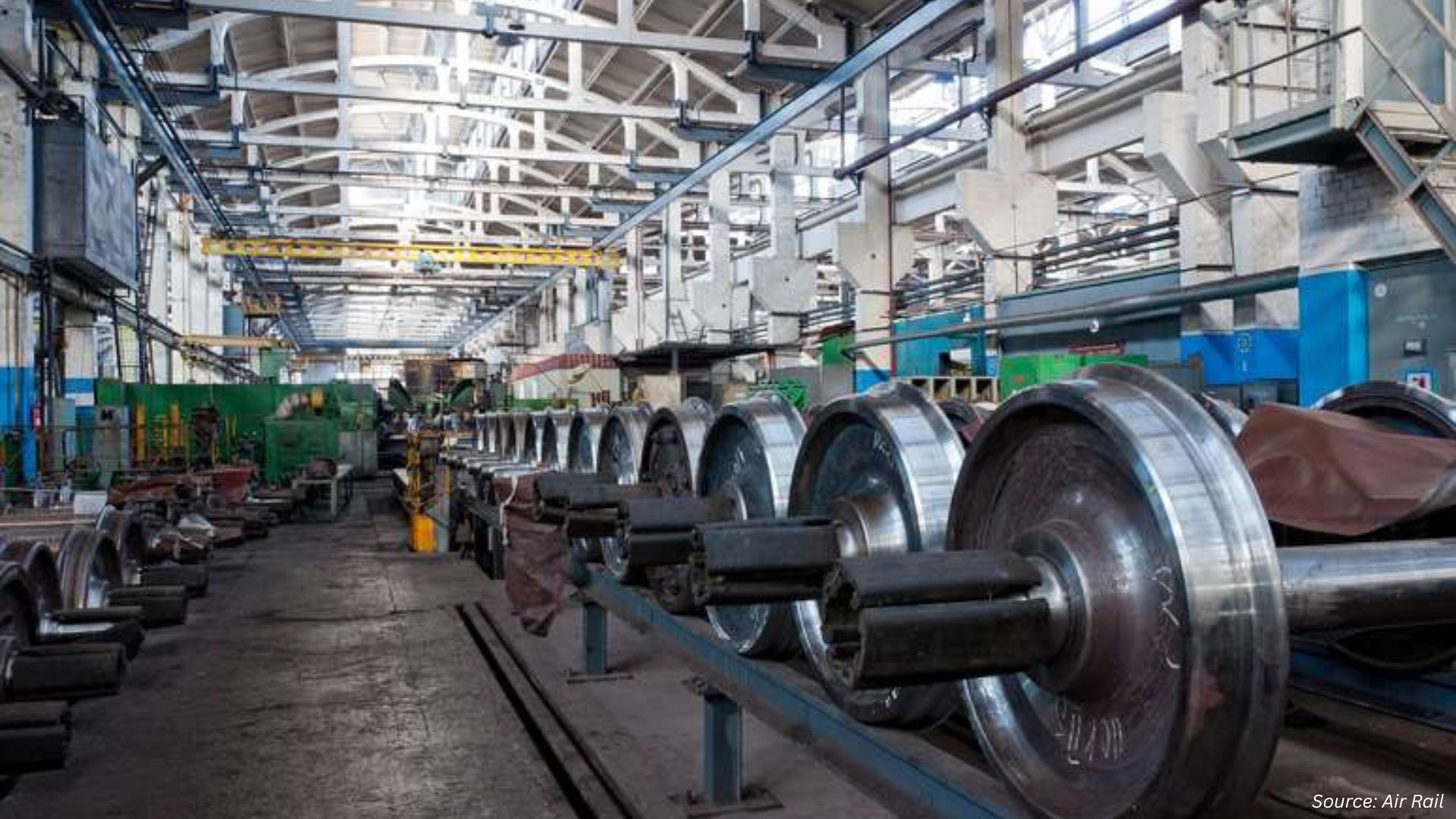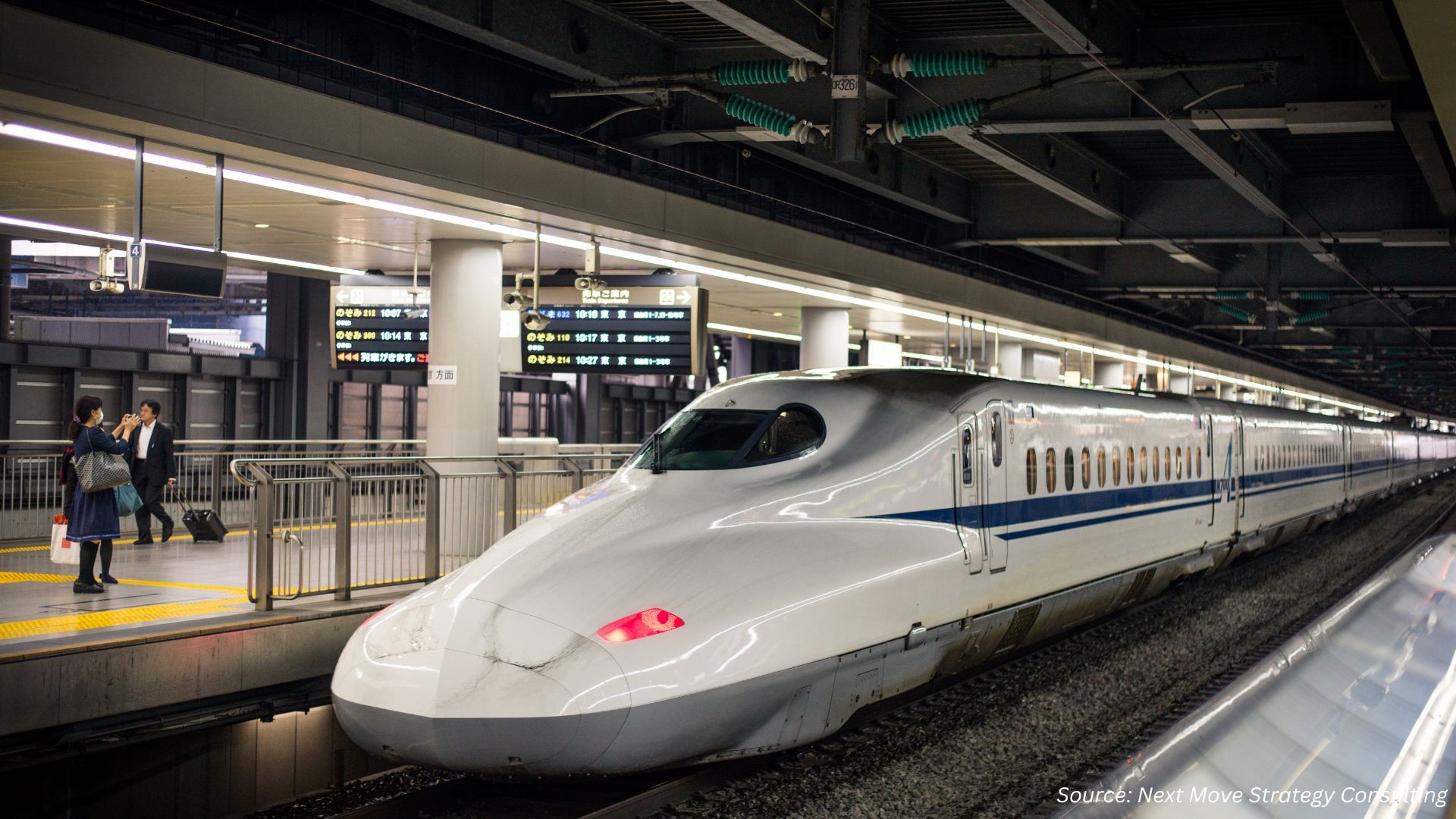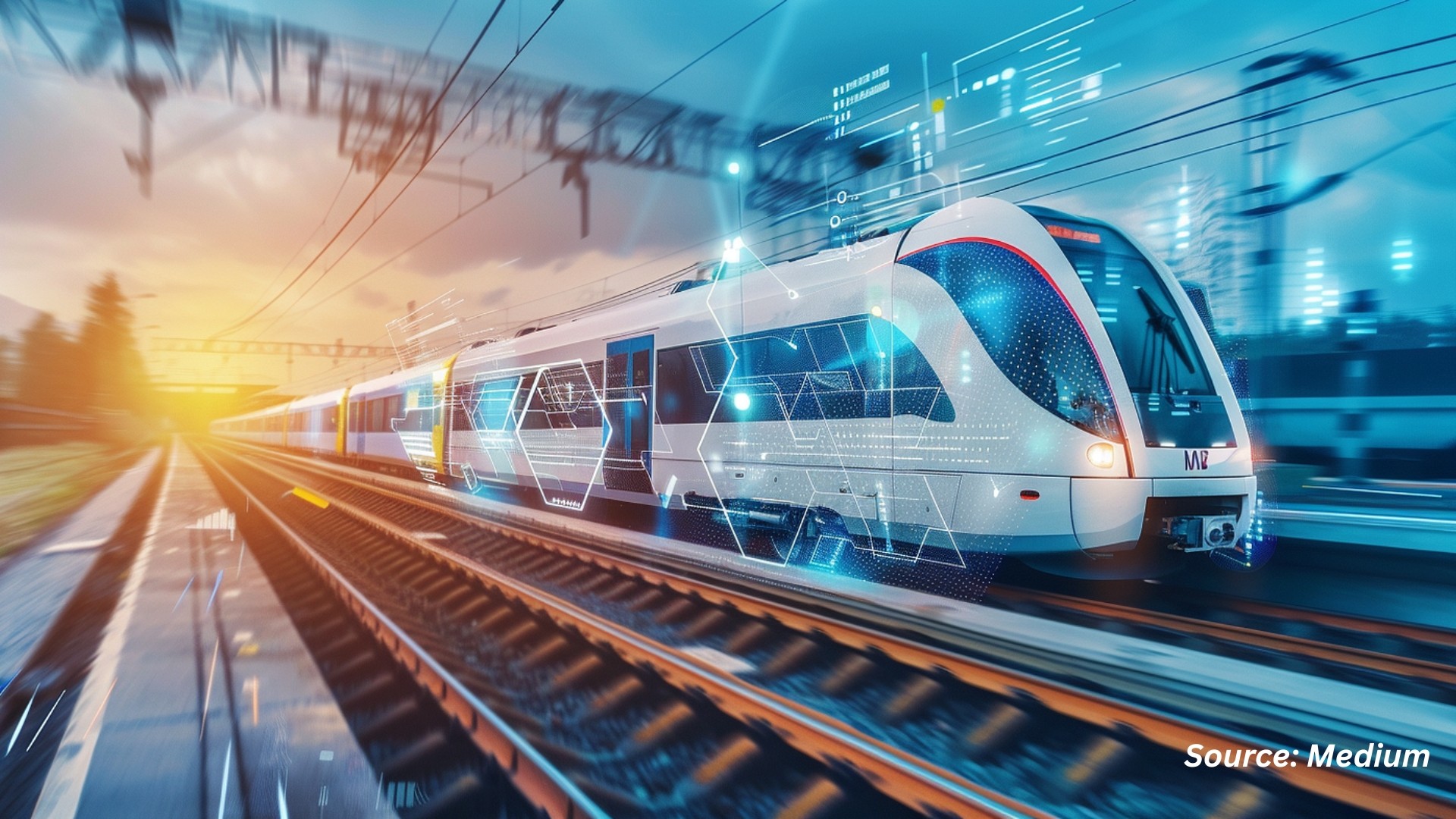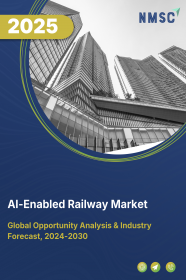
AI-Enabled Railway Market by Component (Hardware, Software, and Services), by Technology (Machine Learning, Computer Vision, Natural Language Processing, and Others), by Deployment (Cloud-Based and On-Premise), by Train Type (High-Speed Trains, Commuter Trains, and Others), by Application (Predictive Maintenance, Safety and Security, Operations Management, and Others), and by End-User (Railway Operators, and Others) – Global Opportunity Analysis and Industry Forecast, 2025–2030
Industry Overview
The global AI-Enabled Railway Market size was valued at USD 2.32 billion in 2024 and is predicted to reach USD 2.54 billion by the end of 2025. The industry is predicted to reach USD 4 billion by 2030 with a CAGR of 9.5% from 2025 to 2030.
The market is experiencing strong growth, primarily driven by government-funded infrastructure projects aimed at modernizing transportation systems. Increasing investments to enhance public safety and operational efficiency are encouraging the deployment of AI technologies in train control, traffic management, and predictive maintenance.
The demand for smart traffic management solutions is also accelerating, supported by large-scale modernization programs in regions such as the U.S., UK, and India. However, market expansion faces challenges from strict regulatory standards and difficulties integrating AI with existing railway infrastructure.
Despite these hurdles, the rise of AI-powered autonomous train systems presents a major opportunity, offering enhanced reliability, energy efficiency, and the potential for scalable adoption across global rail networks.
Surge in Government-Funded Infrastructure Projects Drives Market Growth
One of the key driving forces for the AI-enabled railway market demand is the rising scale of government-funded infrastructure projects. Public agencies are investing heavily in smart transportation systems to enhance safety, efficiency, and capacity.
For instance, the U.S. Department of Transportation (DOT) allocated USD 110 billion in 2024 under the Infrastructure Investment and Jobs Act to modernize railway networks, including AI-driven train control and predictive maintenance systems, according to dot.gov. Similarly, India’s Ministry of Railways reported a budget of approximately USD 30 billion in 2024-25 to integrate AI technologies for real-time traffic management, boosting the market for AI-enabled railway solutions.
Rising Public Safety and Efficiency Investments Drive the AI-Enabled Railway Industry Growth
The increasing focus on public safety and operational efficiency is significantly driving the AI-enabled railway market expansion. Governments worldwide are deploying AI to reduce accidents, optimize schedules, and improve passenger experience.
The European Union Agency for Railways (ERA) reported in 2024 that AI-based collision avoidance systems, supported by a USD 1.2 billion investment under the EU’s Connecting Europe Facility, have reduced rail incidents by 15% in the first half of 2024. This government-backed initiative is embedding AI technologies deeper into railway networks, expanding the market growth potential across the region.
Growing Demand for Smart Traffic Management Fuels Market Growth
The growing need for smart traffic management is fueling the market, supported by government modernization drives. AI systems enable real-time data analysis, congestion prediction, and automated train scheduling. According to the UK Department for Transport (DFT), the 2024 Railway Upgrade Plan invested USD 4.6 billion to deploy AI for optimizing rail traffic, improving punctuality by 12% in major corridors. This push toward automation, backed by government funding, is creating sustained demand for AI-enabled railway technologies globally.
Regulatory and Integration Challenges Restrain the Market Growth
Stringent regulatory frameworks and complex integration processes pose significant restraints to the AI-enabled railway industry. Compliance with safety standards set by agencies like the Federal Railroad Administration (FRA) and the International Union of Railways (UIC) requires extensive testing and certification, often delaying deployment.
Additionally, integrating AI systems with legacy railway infrastructure, as noted by the FRA in 2024, presents technical challenges, hindering widespread adoption. Addressing these hurdles through harmonized regulations and compatible solutions is crucial for market expansion.
Introduction of AI-Enabled Autonomous Train Systems Creates Technological Opportunities
The shift toward autonomous train systems with AI integration presents a significant opportunity for the industry. Precision transportation initiatives, such as the U.S. DOT’s Smart City Challenge and India’s National Rail Plan 2030, rely on AI for autonomous operations, route optimization, and energy efficiency. This enhances system reliability and reduces human error.
A notable example is Alstom’s launch of the AURA system in 2024, an AI-powered autonomous train control solution deployed in France, improving operational efficiency by 20% and supporting sustainable rail travel. As railway operators adopt these intelligent platforms, vendors have a growing opportunity to deliver scalable, future-ready solutions aligned with global transportation goals.
Market Segmentation and Scope of Study
The AI-enabled railway market report is segmented on the basis of component, technology, deployment, train type, application, end-user, and region. On the basis of component, the market is segmented into hardware, software, and services. Hardware is further segmented into sensors, cameras, edge computing devices, communication devices, and control units. On the basis of technology, the market is segmented into machine learning, computer vision, natural language processing, predictive analytics, digital twins, and IoT integration.
On the basis of deployment, the market is segmented into cloud-based and on-premise. On the basis of train type, the market is segmented into high-speed trains, commuter trains, freight trains, metro trains, light rail or trams, and intercity trains. On the basis of application, the market is segmented into predictive maintenance, safety and security, operations management, and others. On the basis of end-user, the market is segmented into railway operators, infrastructure providers, and government and regulatory bodies. Regional breakdown and analysis of each of the aforesaid segments includes regions comprising North America, Europe, Asia-Pacific, and RoW.
Geographical Analysis
North America dominates the global AI-enabled railway market share, underpinned by advanced infrastructure, high investment in smart transportation, and strong adoption of AI technologies. The U.S. continues to lead due to initiatives like the Bipartisan Infrastructure Law, which allocated over USD 66 billion for rail projects, with the U.S. Department of Transportation (DOT) announcing more than USD 2.4 billion in 2024 for 122 rail improvement projects across 41 states to enhance safety and efficiency.
A notable development includes Norfolk Southern Corporation’s collaboration with the Georgia Tech Research Institute in January 2024 to develop a Digital Train Inspection Portal utilizing AI to inspect trains at speeds up to 60 mph. As the demand for real-time monitoring and predictive maintenance rises, North America is expected to maintain its leadership in market size and technological advancement, reinforcing the region’s dominant industry growth.
Europe is experiencing steady growth in the market, supported by a strong focus on rail innovation, increased safety investments, and rising demand for sustainable transport solutions. Countries like Germany, the UK, and France are prioritizing AI-driven tools for traffic management and safety, especially following the European Union Agency for Railways (ERA) reporting a USD 1.2 billion investment in 2024 for AI-based collision avoidance systems, reducing rail incidents by 15%.
The European market is also witnessing notable advancements, with Alstom introducing the AURA system in 2024, an AI-powered autonomous train control solution in France, improving operational efficiency by 20%. The region’s emphasis on regulatory compliance, sustainability, and innovation through initiatives like Europe’s Rail Joint Undertaking continues to shape market trends, contributing significantly to the overall industry size in Europe.
The Asia-Pacific AI-enabled railway industry is undergoing rapid expansion, fueled by government-backed infrastructure programs, a rising focus on smart transportation, and the widespread push for AI integration across railway networks. Major economies such as China, India, and Japan are investing heavily in rail modernization. India’s Ministry of Railways allocated approximately USD 31.5 billion in the 2025-26 budget to expand tracks and integrate AI for traffic management.
In early 2025, Siemens unveiled an AI-enhanced signaling system at the InnoTrans trade fair, tailored for high-density routes in India, improving train scheduling accuracy. The region’s growing pool of skilled engineers and increasing establishment of smart city projects are improving market share. As cost-effective AI solutions gain traction, Asia-Pacific is set to be a major contributor to future market growth potential.
The Rest of the World (RoW) segment, encompassing Latin America, the Middle East, and Africa, is gradually unlocking new opportunities for AI-enabled railway manufacturers. Growth in this region is supported by expanding infrastructure investments, increased demand for efficient transport, and rising collaborations with global rail technology firms.
Though still in the early stages compared to developed markets, countries like Brazil, Saudi Arabia, and the UAE are investing in railway modernization. In mid-2024, Thales launched an AI-driven predictive maintenance system for Saudi Arabia’s North-South Railway, enhancing operational reliability in extreme climates.
As infrastructure improves and global companies increase their footprint in these regions, the AI-enabled railway industry size in RoW is expected to grow steadily, driven by both public transport initiatives and freight transport demands.
Strategic Innovations Adopted by Key Players
Key players in the global AI-enabled railway industry are pursuing a mix of strategic partnerships, technological innovation, and geographic expansion to strengthen their market share and address evolving transportation demands. Companies such as Alstom, Siemens, Thales, and Norfolk Southern Corporation are heavily investing in AI, automation, and real-time data analytics to enhance railway safety, efficiency, and passenger experience.
For instance, Alstom’s launch of the AURA system in 2024 introduced an AI-powered autonomous train control solution in France, improving operational efficiency by 20%. Similarly, Siemens unveiled an AI-enhanced signaling system at the InnoTrans trade fair in early 2025, tailored for high-density routes in India, boosting train scheduling accuracy.
Additionally, Thales launched an AI-driven predictive maintenance system in mid-2024 for Saudi Arabia’s North-South Railway, enhancing reliability in extreme climates. Despite these advancements, challenges such as regulatory hurdles, integration with legacy systems, and the need for skilled personnel persist, particularly in developing regions.
However, the growth potential remains substantial. The rising focus on smart infrastructure, increased demand for sustainable transport, and expanding applications in freight and passenger management are opening new avenues. Strategic collaborations with government bodies and the demand for scalable, AI-driven solutions position the industry for long-term growth. These market trends indicate that a vendor capable of offering innovative, AI-enabled, and interoperable systems will lead the future trajectory of the industry globally.
Key Benefits
-
The report provides quantitative analysis and estimations of the industry from 2025 to 2030, which assists in identifying the prevailing AI-enabled railway market opportunities.
-
The study comprises a deep-dive analysis of the current and future AI-enabled railway market trends to depict prevalent investment pockets in the sector.
-
Information related to key drivers, restraints, and opportunities and their impact on the industry is provided in the report.
-
Competitive analysis of the players, along with their market share is provided in the report.
-
SWOT analysis and Porters Five Forces model is elaborated in the study.
-
Value chain analysis in the market study provides a clear picture of the roles of stakeholders.
AI-Enabled Railway Market Key Segments
By Component
-
Hardware
-
Sensors
-
Cameras
-
Edge Computing Devices
-
Communication Devices
-
Control Units
-
-
Software
-
Predictive Analytics Software
-
Traffic Management Software
-
Security and Surveillance Software
-
Passenger Information Software
-
Autonomous Operation Software
-
-
Services
-
Consulting Services
-
Implementation Services
-
Maintenance and Support Services
-
Training Services
-
By Technology
-
Machine Learning
-
Supervised Learning
-
Unsupervised Learning
-
Reinforcement Learning
-
-
Computer Vision
-
Image Recognition
-
Object Detection
-
Video Analytics
-
-
Natural Language Processing
-
Chatbots
-
Voice Recognition
-
Text Analytics
-
-
Predictive Analytics
-
Digital Twins
-
IoT Integration
By Deployment
-
Cloud-Based
-
Public Cloud
-
Private Cloud
-
Hybrid Cloud
-
-
On-Premise
-
Standalone Systems
-
Integrated Systems
-
By Train Type
-
High-Speed Trains
-
Commuter Trains
-
Freight Trains
-
Metro Trains
-
Light Rail/Trams
-
Intercity Trains
By Application
-
Predictive Maintenance
-
Safety and Security
-
Operations Management
-
Others
By End-User
-
Railway Operators
-
Passenger Rail Operators
-
Freight Rail Operators
-
-
Infrastructure Providers
-
Track Operators
-
Station Operators
-
-
Government and Regulatory Bodies
By Region
-
North America
-
The U.S.
-
Canada
-
Mexico
-
-
Europe
-
The UK
-
Germany
-
France
-
Italy
-
Spain
-
Denmark
-
Netherlands
-
Finland
-
Sweden
-
Norway
-
Russia
-
Rest of Europe
-
-
Asia-Pacific
-
China
-
Japan
-
India
-
South Korea
-
Australia
-
Indonesia
-
Singapore
-
Taiwan
-
Thailand
-
Rest of Asia-Pacific
-
-
RoW
-
Latin America
-
Middle East
-
Africa
-
Key Players
-
Alstom SA
-
Siemens Mobility GmbH
-
CRRC Corporation Limited
-
Thales Group
-
Hitachi Rail Limited
-
General Electric Company
-
Huawei Technologies Co. Ltd.
-
IBM Corporation
-
Cisco Systems Inc.
-
Bosch Mobility Solutions
-
Wabtec Corporation
-
Trimble Inc.
-
RailVision
-
Mirasys
-
KONUX GmbH
REPORT SCOPE AND SEGMENTATION:
|
Parameters |
Details |
|
Market Size in 2024 |
USD 2.32 Billion |
|
Revenue Forecast in 2030 |
USD 4 Billion |
|
Growth Rate |
CAGR of 9.5% from 2025 to 2030 |
|
Analysis Period |
2024–2030 |
|
Base Year Considered |
2024 |
|
Forecast Period |
2025–2030 |
|
Market Size Estimation |
Billion (USD) |
|
Growth Factors |
|
|
Countries Covered |
28 |
|
Companies Profiled |
15 |
|
Market Share |
Available for 10 companies |
|
Customization Scope |
Free customization (equivalent to up to 80 working hours of analysts) after purchase. Addition or alteration to country, regional, and segment scope. |
|
Pricing and Purchase Options |
Avail customized purchase options to meet your exact research needs. |

















 Speak to Our Analyst
Speak to Our Analyst



